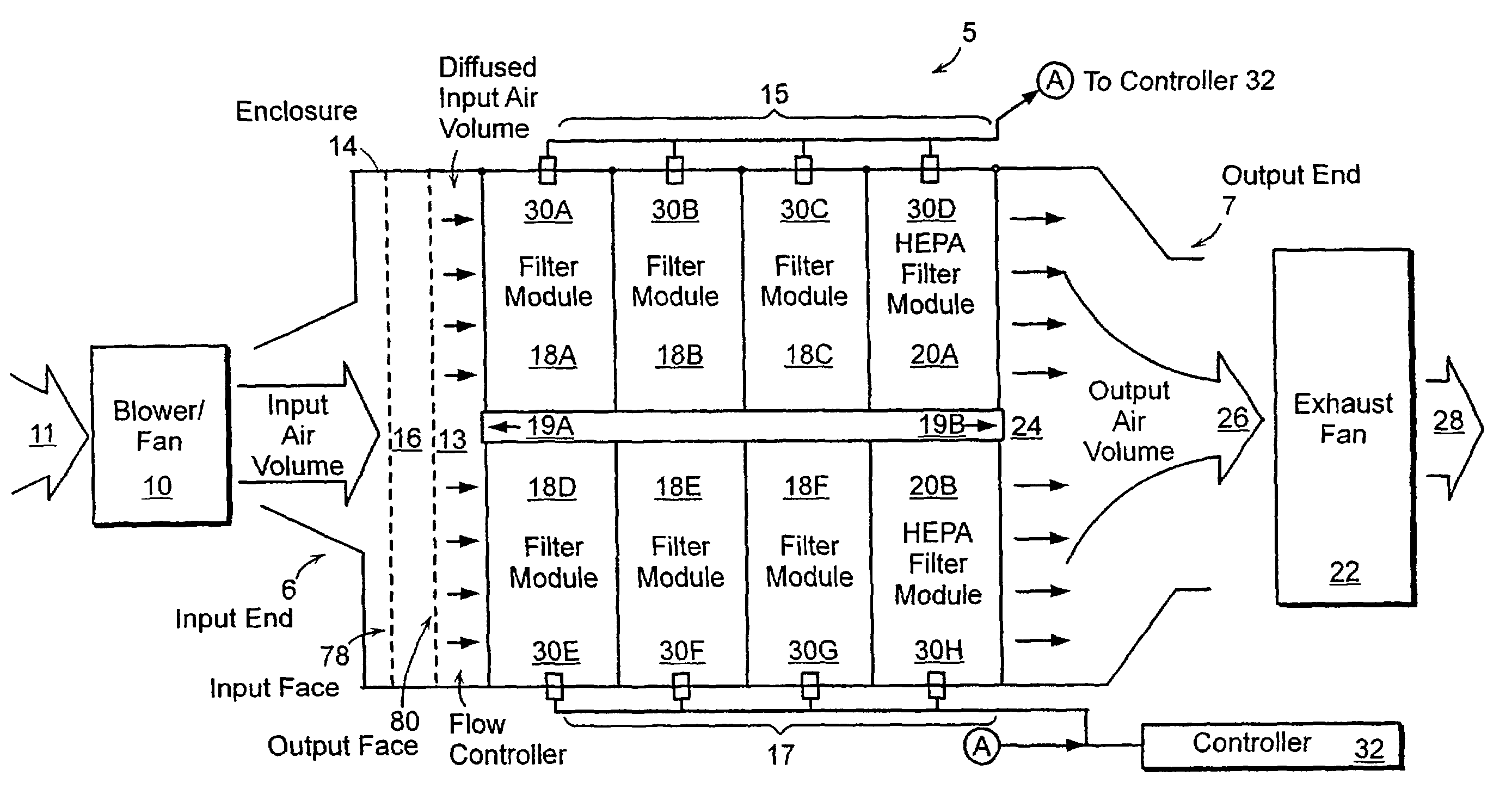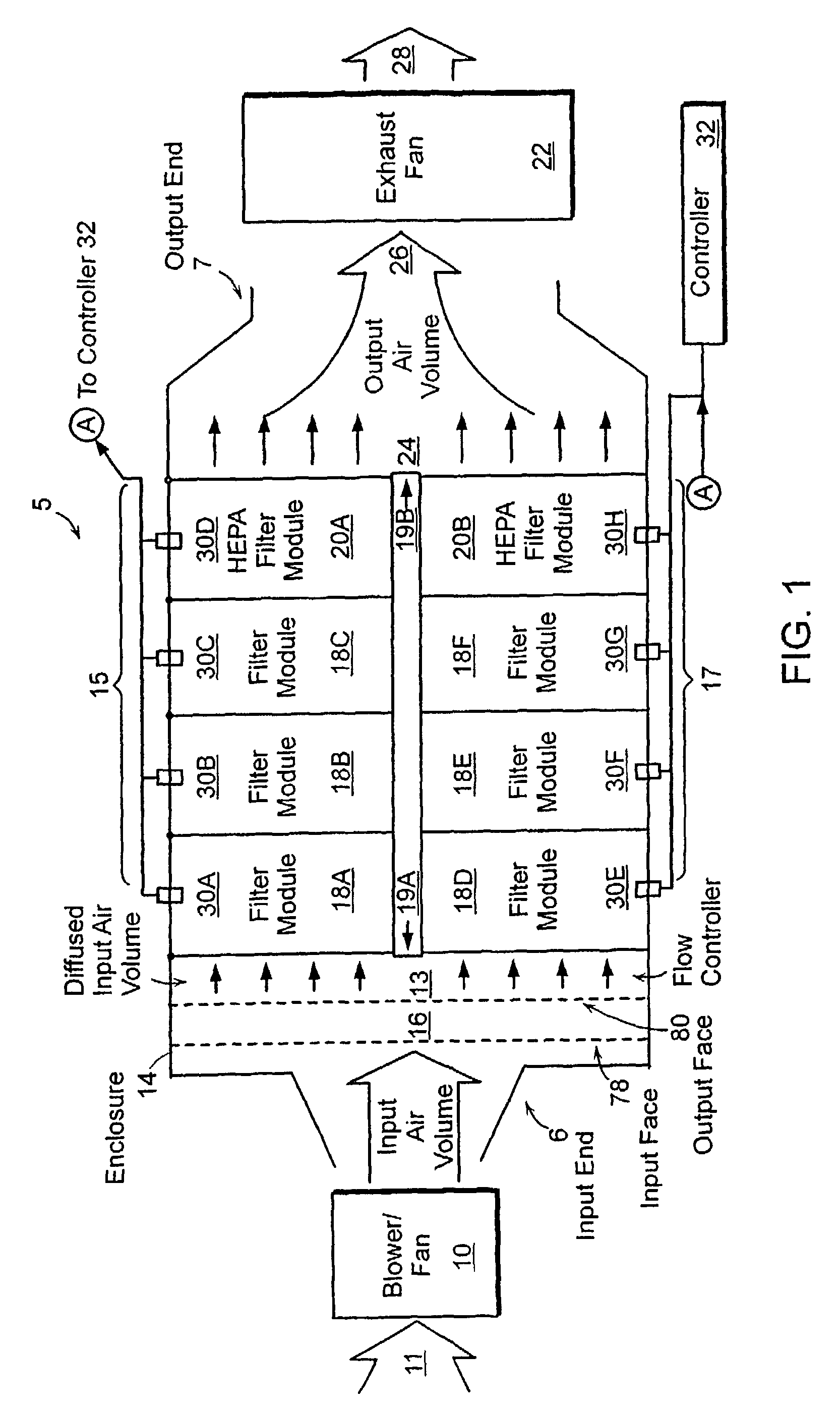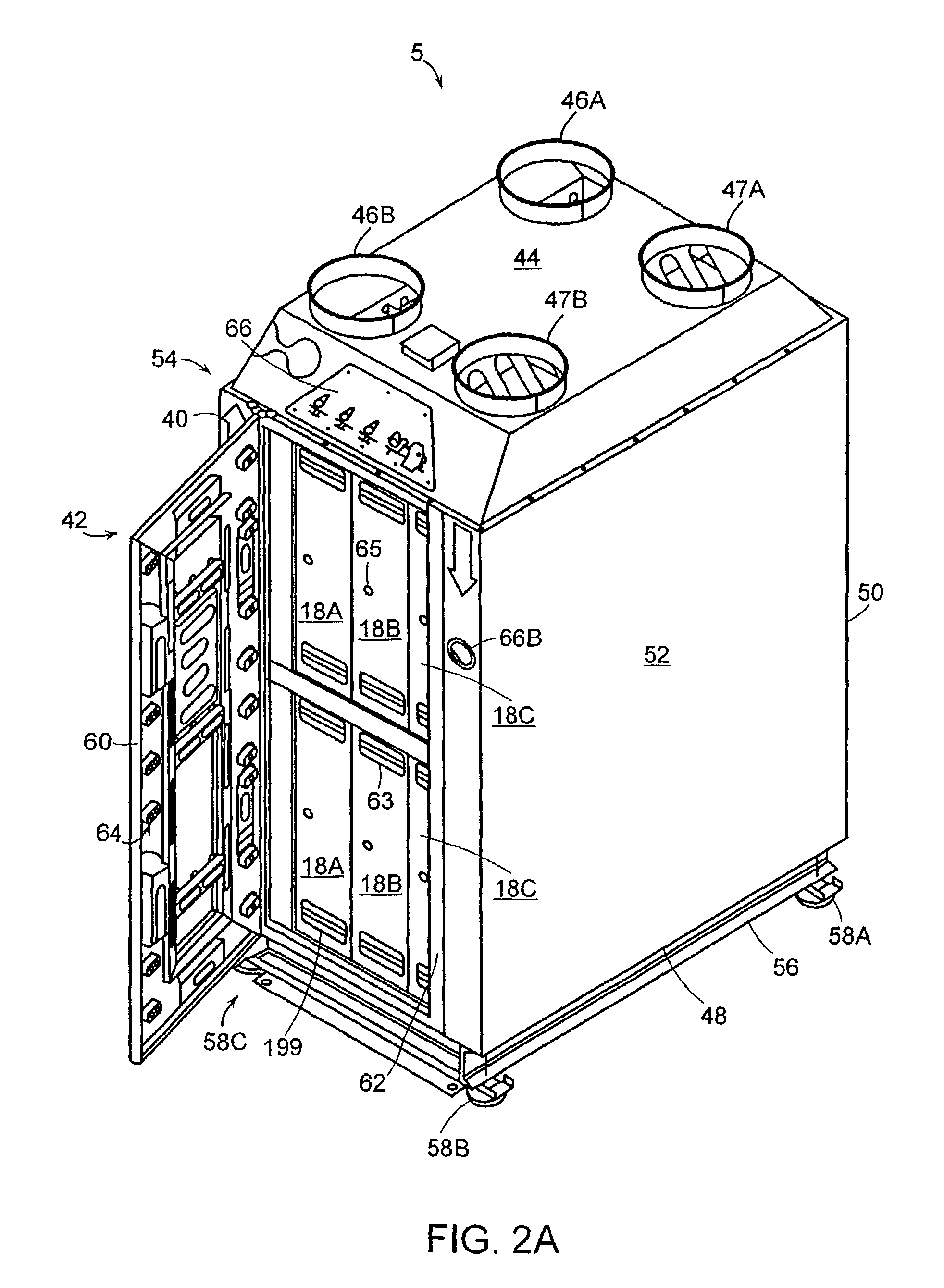System and method for removing contaminants
a technology of removing system and removing method, applied in the direction of specific gravity measurement, using mechanical means, domestic heating, etc., can solve the problems of small amount of contaminants still liable to be present in the gas at concentrations sufficient to damage the tool optics, lint, dead skin and manufacturing debris, etc., to achieve high-efficiency filtering and prolong the time period
- Summary
- Abstract
- Description
- Claims
- Application Information
AI Technical Summary
Benefits of technology
Problems solved by technology
Method used
Image
Examples
example
[0095]A study of the gas volumetric throughput through a sampling tube orifice of the invention was conducted. The study involved monitoring the volumetric flow of gas into the orifice and the corresponding flow from the orifice. The gas flow through the tube orifice can be measured by using standard equipment such as a volumetric flow meter. The volumetric throughput was measured for about 30 seconds. An average volumetric flow into the tube orifice and therethrough was obtained from a sample population of 61. The results of the study are provided in Table 1.
[0096]
TABLE 1MinimumAverageMaximumSamplingVolumetric GasVolumetric GasVolumetric GasTube OrificeFlow (ft3 min−1)Flow (ft3 min−1)Flow (ft3 min−1)Input0.004290.004060.00389Output0.003940.003980.00400
Table 1 shows that a relatively low volume of gas flows through the tube orifice at a high velocity. The results in Table 1 also indicate that the volume of gas flow is consistent as minimum and maximum flow values do not substantiall...
PUM
| Property | Measurement | Unit |
|---|---|---|
| boiling point | aaaaa | aaaaa |
| volume | aaaaa | aaaaa |
| diameter | aaaaa | aaaaa |
Abstract
Description
Claims
Application Information
 Login to View More
Login to View More - R&D
- Intellectual Property
- Life Sciences
- Materials
- Tech Scout
- Unparalleled Data Quality
- Higher Quality Content
- 60% Fewer Hallucinations
Browse by: Latest US Patents, China's latest patents, Technical Efficacy Thesaurus, Application Domain, Technology Topic, Popular Technical Reports.
© 2025 PatSnap. All rights reserved.Legal|Privacy policy|Modern Slavery Act Transparency Statement|Sitemap|About US| Contact US: help@patsnap.com



